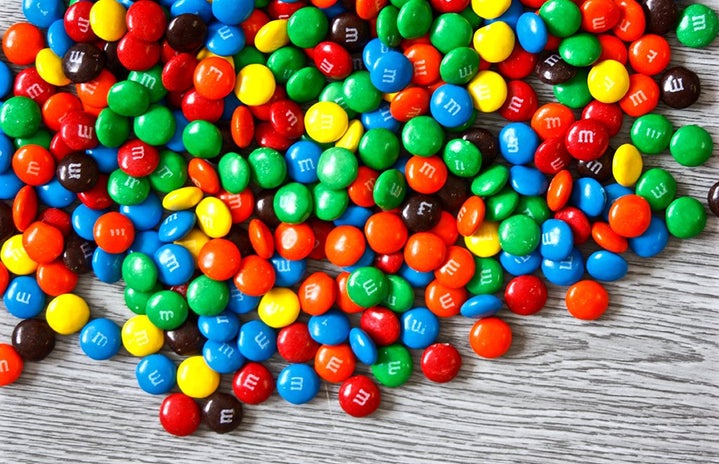I don’t know about you, but in my personal experience, I’ve found that everyone has their go-to candy that they turn to when they have a bad day. In some cases, it could be considered an “addiction candy.” An addiction candy is just one of those foods that you start eating some of them and then you zone out and all of a sudden they’re all gone. (I am definitely guilty of this). But, as more and more people are starting to look into what ingredients actually go into their food, there isn’t much debate about the coloring of foods. Now, what does food ingredients and addiction candy have to do with each other?
Well, let me introduce you to my Chemistry Research Project. I am currently in a specialized research lab. This means that instead of doing the regular labs that go along with my lecture class, it is a lab where we get to choose what we’re testing and the experiment that we run for our final project. Now for the food part. One of our introductory labs was testing to try and find the concentration of Red 40 food dye in Gatorade Zero and Powerade. After that experiment, the wheels in my head started turning. I wanted to do an experiment that had something to do with dye because I like colors, but I also liked the idea of doing an experiment that had to do with food because I want to have a career in Food Science after I graduate. And then BAM! The idea came to me: My addiction food is Skittles, so why not test for the amount of dye that is used in making Skittles.
Skittles uses four different dyes to make the colors for the original five flavors: Red 40, Yellow 5, Yellow 6, and Blue 1. In order to do the experiment, we ordered the dyes in the most concentrated form that you can get. (To say the least, you only need a tiny amount to get a significant color payoff). After the dyes arrived at the lab, we dissolved them in water to make a stock solution which is what we will use to dilute the colors. Now you may be asking, how are we going to test for the concentration of dye in the Skittles? Well, using an instrument called a UV-Vis, we can shine different wavelengths of colors through different solutions and get their absorbance. Using that absorbance value, we can calculate the concentration.
This is an ongoing experiment so I can’t report on the results yet. But, even if you can’t run super technical experiments, I still think it’s important that we start being able to learn what is in our foods so that we can know what things we’re using to fuel our bodies and how that can impact our bodies.


